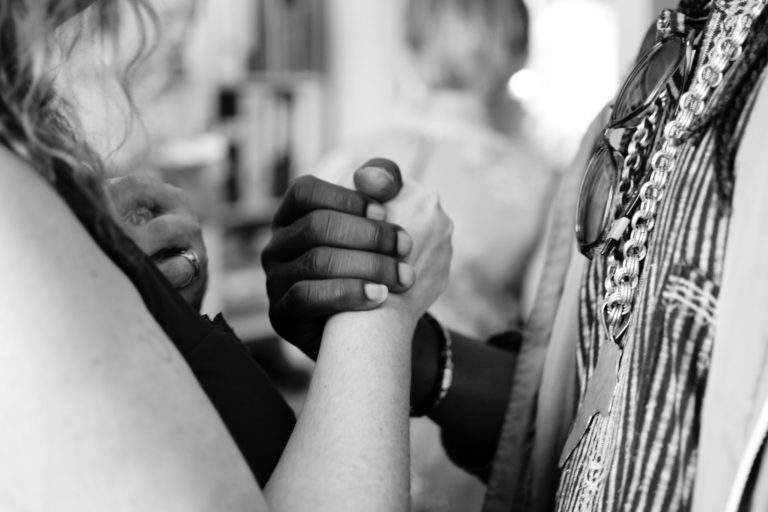
In February 2021, the City of Hayward, Calif. convened an eight-week Policy Innovation Workshop on Community Safety with the goal of developing and testing policy ideas aimed at improving community safety. Workshop participants include community members and city staff, including representation from the city’s police force and criminal justice system. The workshop was convened in response to a letter from several city council members to Hayward’s city manager. ESAL Founder & Chair Arti Garg is one of the workshop’s community participants. This blog series is a diary of Garg's participation in the workshop. For additional entries please see:
Workshop 3 on March 10, 2021
March 11, 2021
I have written before about the importance of empathy in local policy-making. But I haven’t elaborated on what that means in practice. Last night’s workshop, which focused on how to interview community members about their experience of public safety, gave me a new perspective on the role of empathy in hypothesis-driven policy-making...including how best to resolve the tension between the subjectivity inherent in empathetic thinking and the objectivity we, as scientists and engineers, strive toward in our work.
As part of the innovation process, we will be interviewing community members to learn more about my team’s challenge. During the workshop, the facilitators gave us concrete information about how to respectfully conduct interviews. I was struck by how “unscientific”--at least from this physicist’s perspective--the suggested approaches were. Our facilitators asked us to empathize with our interviewees. They suggested that we focus on the interviewees’ emotional reactions to experiences they described rather than on the factual details. We were encouraged to tailor the arc of our interviews to each interviewee; adjusting, omitting, or adding questions based on what we intuit will make the subject most comfortable and open to sharing. We were also told to be mindful that our own group identities (e.g. race, class, etc) might impact what the interviewee is willing to share.
While interviews are not a common practice in my own scientific discipline, I am familiar with best practices in other disciplines. And none of these techniques meet my understanding of their data gathering standards! I remarked in the large group session how different these approaches are from those I’ve used in even less rigorous scenarios like journalistic interviews or when interviewing job candidates or grant applicants. One of the workshop facilitators acknowledged this, observing that these interviews are intended to be “relational, not transactional.” This comment resonated with me.
She was asking me to use empathy to develop a holistic, and ultimately subjective, understanding of the experiences of the people impacted by public safety policy. The interviews aren’t a “transaction” through which we extract information. They are an interaction through which we can learn to better relate to members of our community. The workshop facilitators said we are aiming to develop evidence-informed policies...though perhaps it’s more accurate to say “evidence-informed policy hypotheses.” By interviewing community members, we will gain more “evidence” about their experiences. But instead of seeking to perform a statistically sound analysis that might result in an “evidence-based” description of their experiences, we are seeking to develop an “evidence-informed” understanding of how our fellow community members experience safety in Hayward. We will necessarily need to pair that understanding with our own personal experiences to develop hypotheses about what changes could improve their experiences.
While the physicist in me fixates on the data gaps in this approach, the former congressional fellow and policy analyst knows that this is actually a more rigorous approach than policymakers often use. When I speak about ESAL, I almost always start by reminding people that, “Decisions are made by those who show up.” While policymakers want to use the best information available to make decisions, often that information is limited to the best of what is most readily available...usually made so by the people who “show up” and present it to them. The urgency of decision-making often means they don’t have time to try to uncover what they don’t know. In scientific terms, it means they don’t have time to understand the “biases” in their data. Through these interviews, we are attempting to correct for our biased evidence by seeking out new information. Because we acknowledge that our process for doing this is imperfect, we will rely on our shared humanity to fill in the gaps...and we assume this will help us come up with more effective solutions for our chosen stakeholder group.
This process is messy. The outcome is likely to be heavily dependent on the make-up of the workshop participants. But all of policy-making is like that. It’s why we have elections. It matters who is representing us in the policy process! As engineers and scientists, we may find it attractive to think of ourselves as objective experts providing unbiased input into a policy process. As I’ve argued before, this romanticized ideal is logically impossible to achieve. Scientists are biased, because we are human and humans are biased. The very act of choosing what topics to research or on which issue to engage is an act of bias. In this post, I’ve revealed my own biases that place a higher value on objective, factual information as compared to subjective, emotional information.
Our goal as engineers and scientists who engage locally should not be to maintain an artificial wall of “objectivity” between ourselves and our neighbors. Instead, our goal should be to better understand and relate to their experiences. In doing so, we can bring our whole selves--the part that feels pain and empathizes with our neighbor, the part that makes value judgments and shares those values with our neighbor, and the part that likes diagonalizing matrices even if our neighbor doesn’t--to developing solutions.